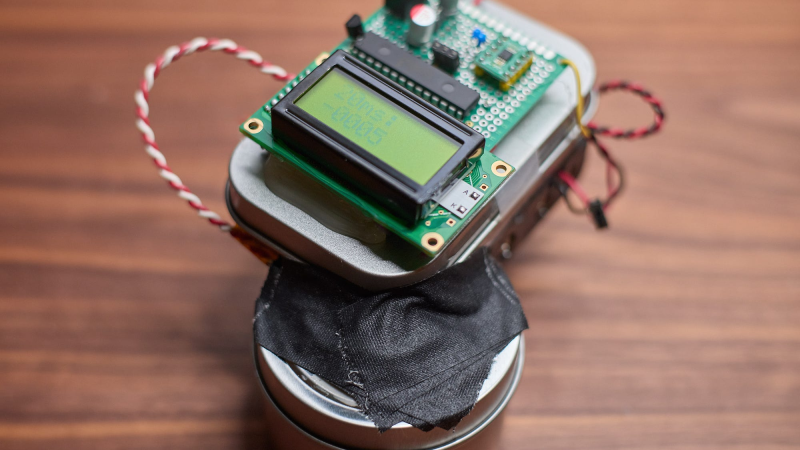Spoiler alert: almond butter isn’t phosphorescent. But powdered milk is, at least to the limit of detection of this homebrew phosphorescence detector.
Why spend a bunch of time and money on such a thing? The obvious answer is “Why not?”, but more specifically, when [lcamtuf]’s son took a shine (lol) to making phosphorescent compounds, it just seemed natural for dad to tag along in his own way. The basic concept of the detector is to build a light-tight test chamber that can be periodically and briefly flooded with UV light, charging up the putatively phosphorescent compounds within. A high-speed photodiode is then used to detect the afterglow, which can be quantified and displayed.
The analog end of the circuit was the far fussier end of the design, with a high-speed transimpedance amplifier to provide the needed current gain. Another scaling amp and a low-pass filter boosts and cleans up the signal for a 14-bit ADC. [lcamtuf] went to great lengths to make the front end as low-noise as possible, including ferrite beads and short leads to prevent picking up RF interference. The digital side has an AVR microcontroller that talks to the ADC and runs an LCD panel, plus switches the 340 nm LEDs on and off rapidly via a low gate capacitance MOSFET.
Unfortunately, not many things found randomly around the average home are all that phosphorescent. We’re not sure what [lcamtuf] tried other than the aforementioned foodstuffs, but we’d have thought something like table salt would do the trick, at least the iodized stuff. But no matter, the lessons learned along the way were worth the trip.















In the 1980s I worked for marine biologists who used fluorometers to measure chlorophyll in the open ocean at concentrations of micrograms per litre in seawater. The lab instuments used a photomultiplier tube detector -which was impractical to package for conducting chlorophyll profiles of the water column using an instument package the was to measure down to 200 meters or so. So, the instrument we used made by Sea-Tech which used xenon flash excitation and a large photodiode along with optical filters to limit the excitation band to around 425nm and the receiver band to 685nm. The receiver had a sample and hold/peak detector to capture the received 685nm energy flourescing from any chlorophyll bearing biomass in the water.
It worked but it was noisy. It was difficult to eliminate noise emmitted by the flash circuit, and the sample and hold – not to mention the clumpy nature of chlorophyll bearing criters distributed in the water column.
These were hand built, expensive instruments. I made an attempt to build a cheapo instrument that used blue LEDs as emmitters and a red LED as a detector. The red LED was used as a photo generated current source meant to drive a current-to-frequency converter (Op Amp + 7555 timer chip). Frequency variation was to offer some measure of chlorophyll content. The setup would be calibrated against the lab fluorometer. I never got past a protoype. It sort of worked but was clearly not sensitive enough.
Should add a few other wavelengths, I’ve found some glow materials don’t glow as bright with deeper UV and better closer to V or B
True. Check out any modern “paper” (i.e., polymer note) currency with non-trivial security features (basically, anything but US notes). Some fluorophores glow only with 365 nm light, some with 405 nm, and some with both, all on the same bill. (There are transmission holograms in there too!)
“TLV3541 — a neat if somewhat finicky rail-to-rail op-amp”
I’d be interested to know why he thinks it finicky. I was looking at getting some for use in a project that needs amplification of 10MHz signals, is it a problematic part or are all really fast op amps (I use 10MHz gbwp 6v/us op amps regularly without issue by comparison) a bit weird to work with? Any good tutorials on this(using op amps at up to 10s of MHz)? Thanks
The brittle white plastic light switches are made of is phosphorescent when exposed to strong ultraviolet light, it only glows for a second or so.
I’d be more interested in testing bugs.
It will probably cause “bugs” if it is used on loaded EPROMs!
B^)
Try two circuits, one with small, and second with big photodiode. And for the diode acting as charged capacitor, keep it shorted by a transistor and then switch it off with LED transistors.